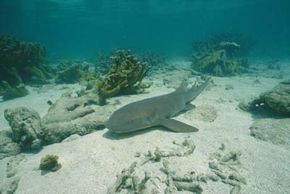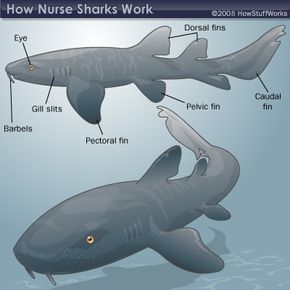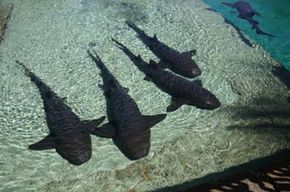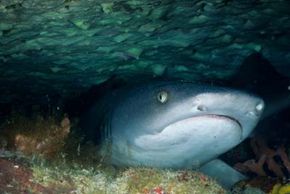You might think that the nurse shark would be one of the most helpful creatures in the sea, scurrying around to aid its shark friends and care for the ocean's wounded. Or perhaps you have the idea that this shark must take exceptional care of its young. However, the nurse shark does neither. In fact, it does very little at all. The nurse shark is a mellow and sluggish shark. You might go so far as to call it lazy, the slacker of the sea. It can't even be bothered to migrate to warmer waters when the temperature changes. Instead, the nurse shark just deals with the cold by doing even less, if such a thing is possible [source: National Aquarium].
Advertisement
So how then, did this shark get its name? There are a few different theories. One such theory is that this shark makes a sucking sound when they're looking for prey, which has been compared to the sound a nursing baby makes [source: National Geographic].
However, the likeliest explanation is that the name represents an evolution of language over many centuries. "Huss" was the name originally given to catsharks, which the nurse shark resembles. In Middle English, "huss" was slurred into "nuss," because the indefinite article "an" preceded it, and the 'n' of the article was frequently attached to the following word. "Nuss" was being used to describe sharks by 1440, and it seems that nurse just derived from there [source: Castro].
The nurse shark's formal, scientific name is Ginglymostoma cirratum, and when translated from Greek and Latin, the name means "curled, hinged mouth," which may describe the puckered face that the nurse shark sometimes makes [source: National Geographic].
But why the puckered face? After all, the nurse shark has a life of leisure, right? What does it put in that puckered mouth? Is there any danger of it eating a person? And how, besides a general puckered look, will I know if a nurse shark is in the vicinity? On the next page, we'll take a further look at the nurse shark's appearance.
Advertisement



